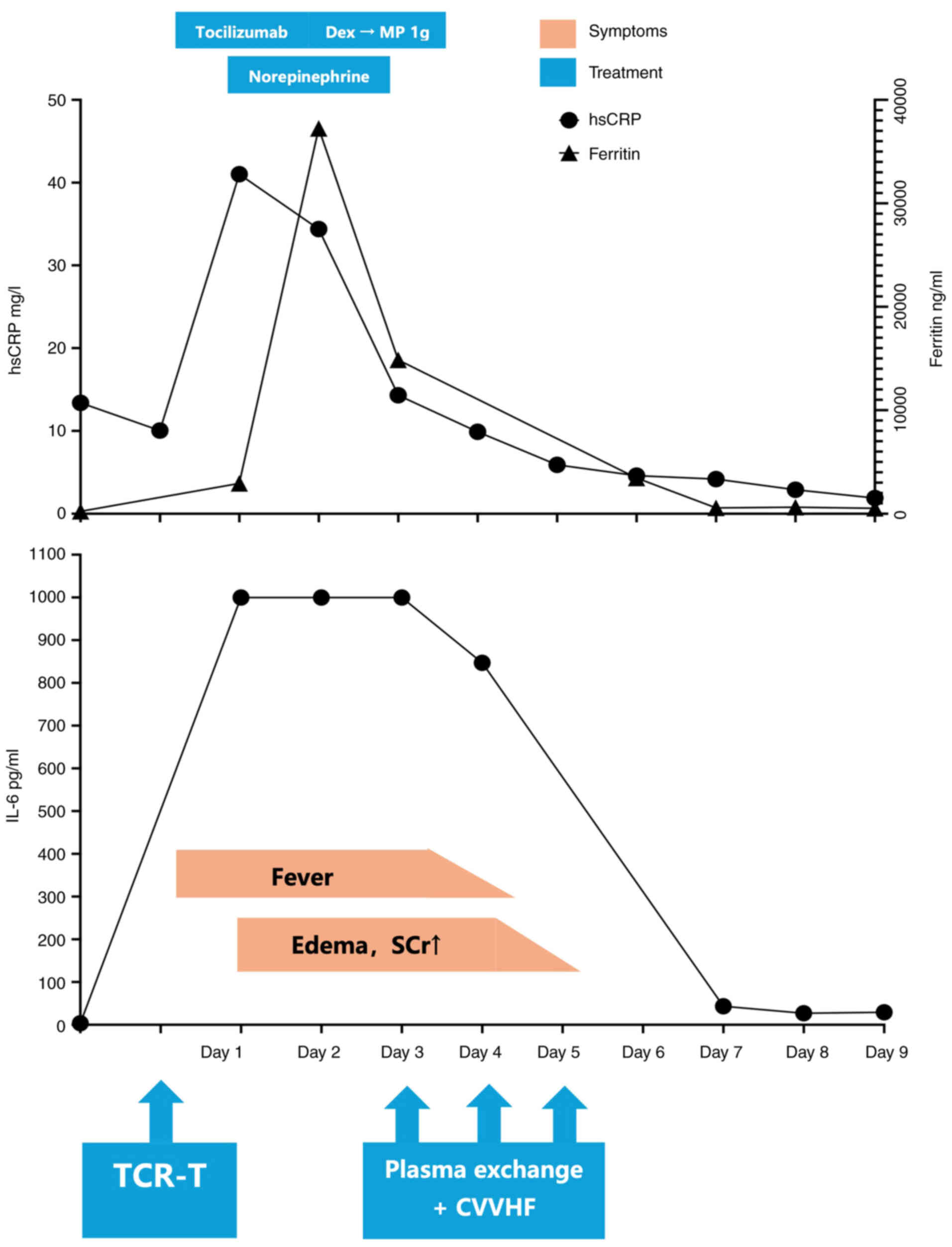Plasma exchange as an effective treatment for cytokine release syndrome following T cell receptor‑engineered T cell immunotherapy: A case report
- Authors:
- Published online on: October 14, 2024 https://doi.org/10.3892/ol.2024.14740
- Article Number: 607
-
Copyright: © Zheng et al. This is an open access article distributed under the terms of Creative Commons Attribution License.
Metrics:
Total
Views: 0 (Spandidos Publications: | PMC Statistics:
)
Total PDF Downloads: 0 (Spandidos Publications: | PMC Statistics:
)
Abstract
T‑cell receptor‑engineered T‑cell (TCR‑T) immunotherapy is a promising approach for the treatment of solid tumors. However, TCR‑T therapy can result in severe cytokine release syndrome (CRS), thus limiting its therapeutic application. The present study reported the case of a patient with TCR‑T‑related CRS, which was treated successfully with plasma exchange (PE). A 35‑year‑old male patient, who was diagnosed with hepatitis B virus (HBV)‑related hepatocellular carcinoma (HCC) with lung metastases, was enrolled in a clinical trial for hepatitis B virus surface antigen‑specific TCR‑expressing autologous T‑cell therapy for HBV‑related HCC after failing multiple lines of targeted immunotherapy and local treatments. Therefore, TCR‑Ts were infused after peripheral blood mononuclear cell collection, engineering and lymphodepletion chemotherapy. However, following engineered T‑cell reinfusion, the patient developed a fever, hypotension, edema, multiple serous effusion and acute kidney injury, and was consequently diagnosed with grade 3 CRS and transferred to the Intensive Care Unit. The patient received three daily PE sessions (3,000 ml of fresh frozen plasma per session), renal replacement therapy, tocilizumab and 1,000 mg pulse methylprednisolone for 3 days. Following treatment, the patient's hemodynamic condition was stabilized and the C‑reactive protein, ferritin and IL‑6 levels were markedly reduced. During follow‑up, a stable disease state was exhibited by the liver cancer and lung metastatic lesions. To the best of our knowledge, this is the first case reporting PE as a treatment approach for managing CRS following TCR‑T therapy for solid tumors. The present study demonstrated that blood purification treatments, such as PE, which target inflammatory mediators and restore the balance between pro‑ and anti‑inflammatory cytokines, could be a notable component in managing severe CRS associated with engineered T‑cell treatment. However, additional clinical and translational studies are needed to further understand the mechanisms of T‑cell immunotherapy to treat patients with solid tumors.











